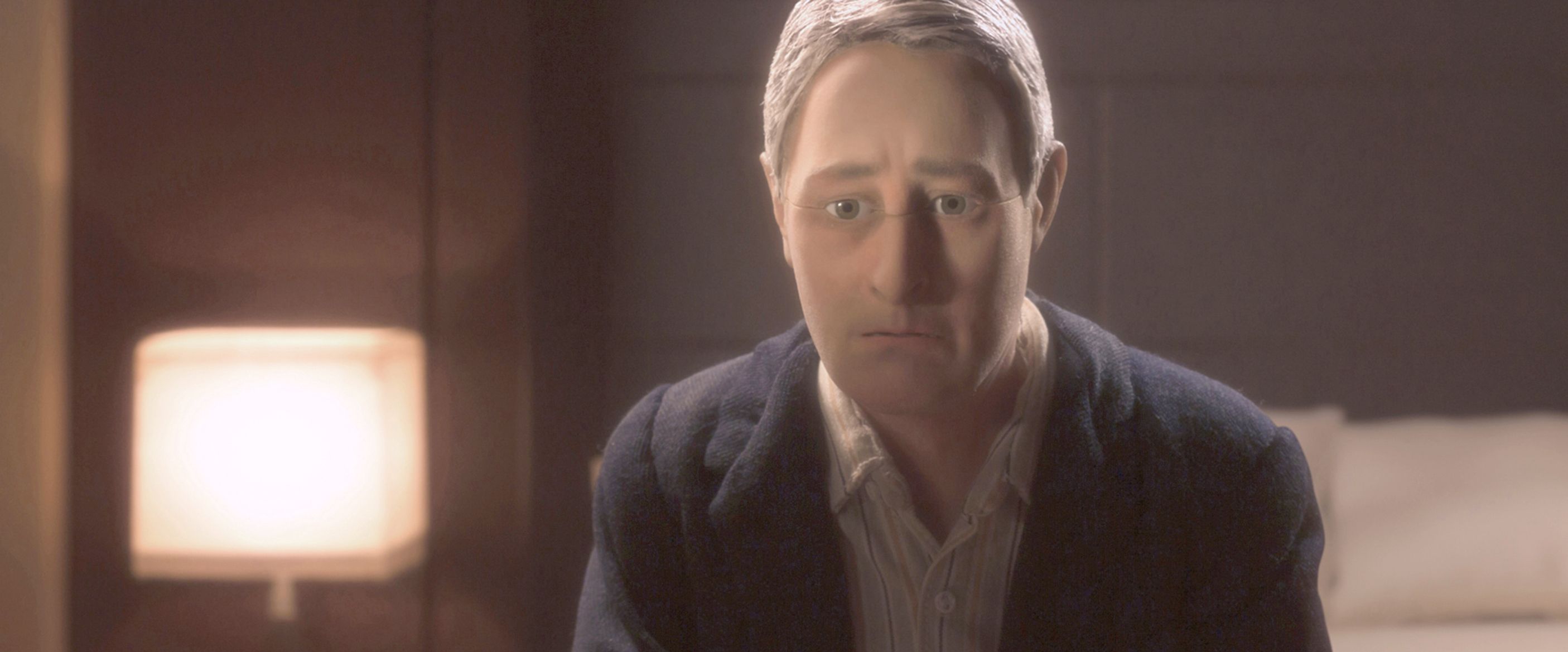Ever since Spike Jonze directed Charlie Kaufman’s script for the revolutionary Being John Malkovich back in 1999, Kaufman’s name has become synonymous with a unique fusion of surreal comedy and emotional meta-drama as further evidenced in his scripts that followed: most prominently Eternal Sunshine of The Spotless Mind and Synechdoche, New York.
Here Kaufman (as both writer and co-director) returns to marionette territory with 3D printed figurines, animated in stop motion, in lieu of actors.
Still a douche in LA
Michael Stone (Thewlis) is an expert in customer relations. He’s even written a book on the subject and when we meet him, he’s flying from LA to Cincinnati to give a speech there.
Meanwhile he clutches a letter written over a decade ago from a former lover, imploring him to enlighten her on why he left her. Later, Michael arranges a meeting with that old flame in the hotel bar. As Michael talks of his new LA life with his wife and son, it becomes painfully clear that she has been less fortunate over the intervening years.
Being Johnny malcontented
Ostensibly a sort of stop-motion Lost in Translation, with Thewlis’s performance recalling his nocturnal ramblings as Johnny in Mike Leigh’s Naked, Anomalisa speaks to anyone who has experienced insecurity or self-doubt and, in turn, recognised those qualities in others before exploiting them as weaknesses to their own ends.
Put like that, the practice sounds predatory and probably is, but it’s often indicative of both blind selfishness and a lack of self-confidence – making it so common a crime that we tend not to class it as such.
Physical actions such as shaving, showering and sex play out in real time, rendering them strangely hypnotic but also serving to place emphasis on pacing. These moments are often contrasted with behaviour more abrupt and unexpected. Ultimately, the film is concerned with balance on several fronts.
Relationships are often doomed when an uneven number of compromises are made by one party to satisfy the other; when all the power is held by one, things inevitably turn ugly. Kaufman’s ability to so succinctly illustrate this human tendency towards imbalance, and find so many unconventional methods by which to do so, make Anomalisa a truly distinctive film even by Kaufman’s standards.
Penetrating the fortress mind
The decision to use these remarkably expressive stop-motion figures, with 3D printed faces, is fully justified within the context of the narrative and allows for several of the film’s most inspired storytelling devices.
For example, until Michael meets Lisa (voiced by Jennifer Jason Leigh), a young admirer of his writing, every character we meet prior to her has been voiced by Tom Noonan. Consequently, be they male or female, every character sounds the same (and, to a less obvious extent, they look the same too) – amplifying the impact of Lisa’s arrival when she does. This also reinforces the idea that we exist in a hermetically sealed bubble of our own making, with only precious few able to penetrate its integrity.
A ‘Sunrise’ adaptation of sorts
Not since FW Murnau’s Sunrise (1927) have we seen such a soulful, visually innovative analysis of the human heart.
Anomalisa explores inner-life territory in a similar fashion to Kaufman’s exemplary Synecdoche, New York, albeit on a smaller scale, and Kaufman’s insight remains as fresh and relevant as it was with Being John Malkovich nearly 20 years ago.














